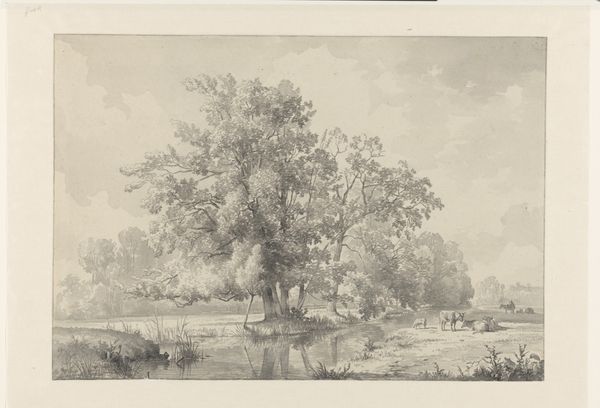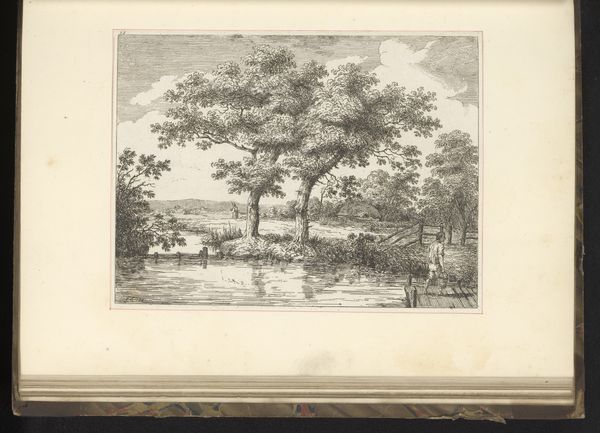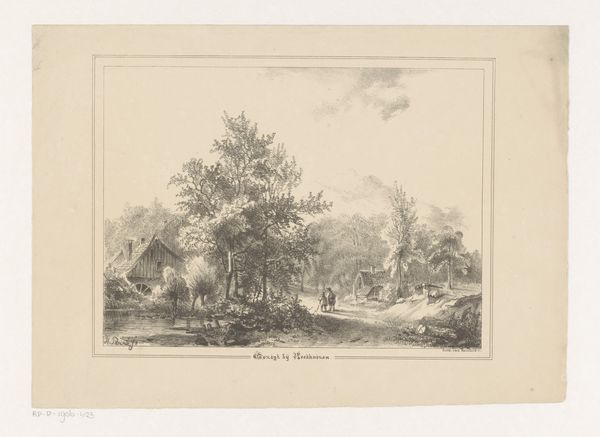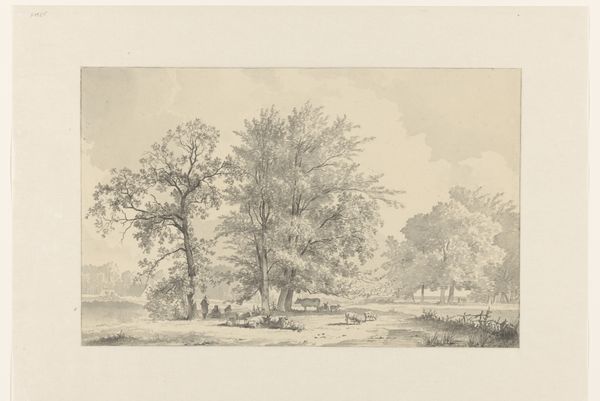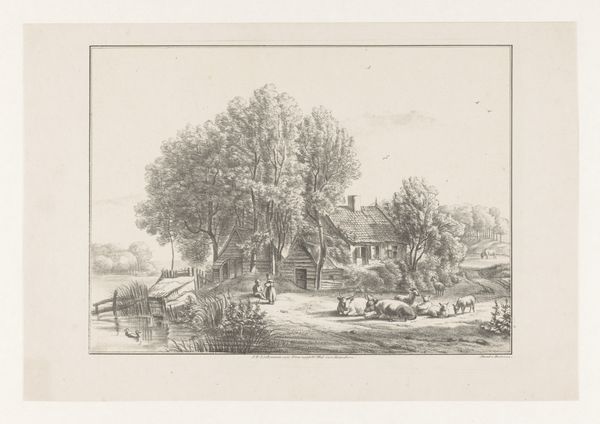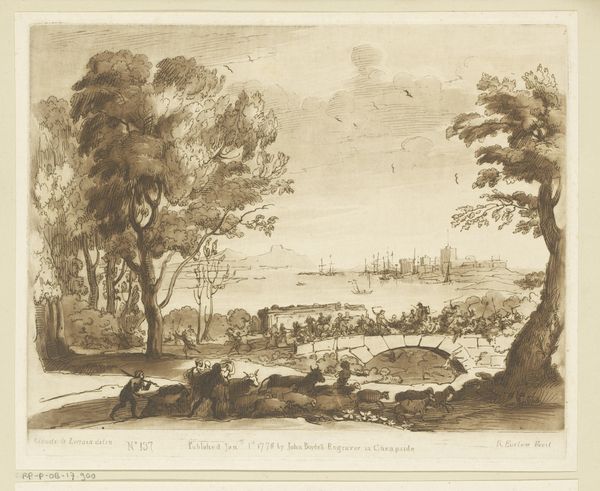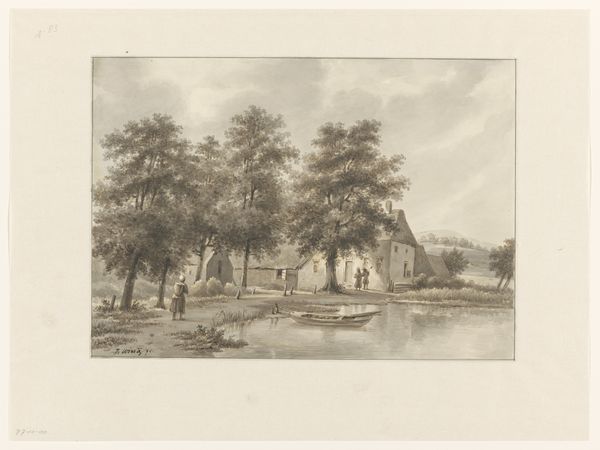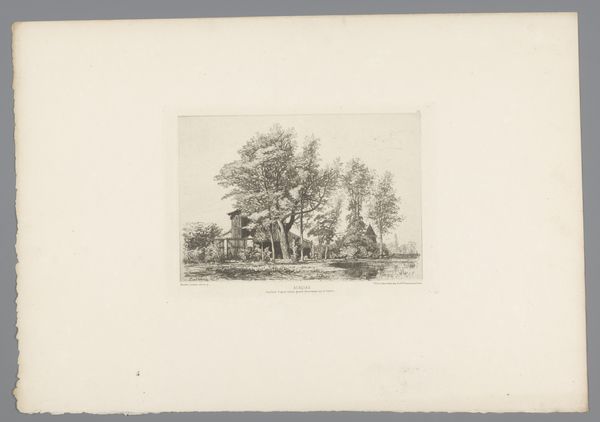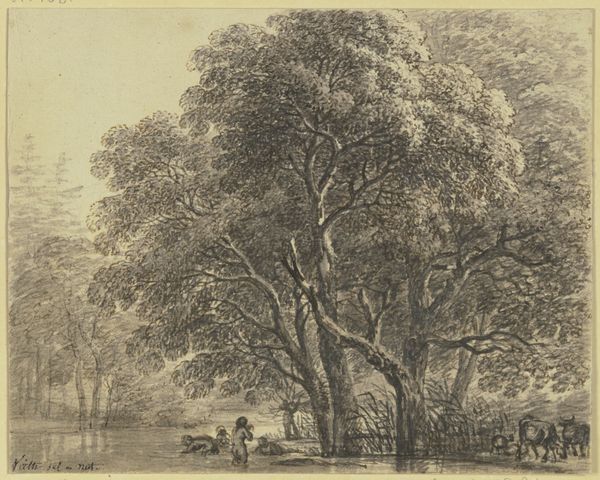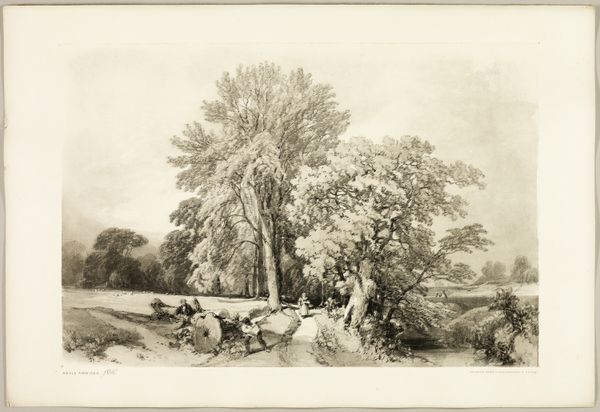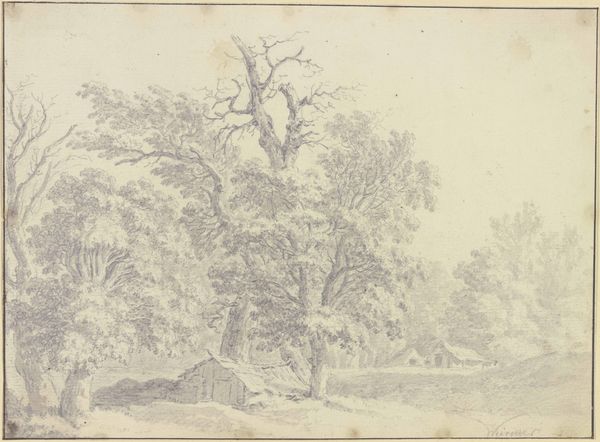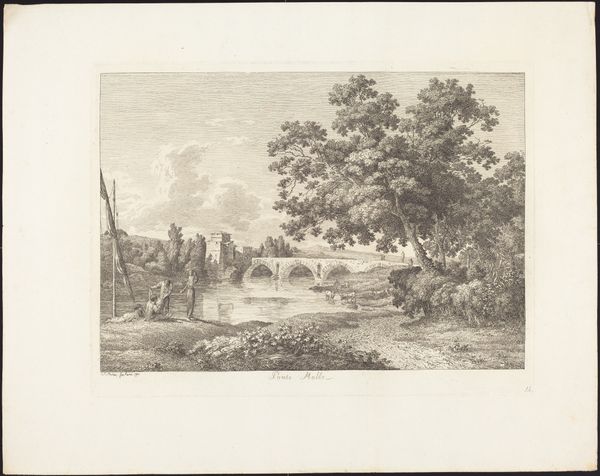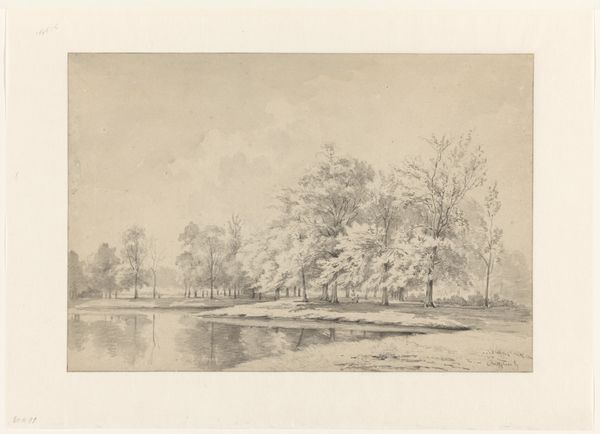
Common Willow, from The Park and the Forest 1841
0:00
0:00
drawing, lithograph, print, paper
#
drawing
#
lithograph
# print
#
landscape
#
paper
#
romanticism
Dimensions: 287 × 410 mm (image); 369 × 541 mm (sheet)
Copyright: Public Domain
Curator: James Duffield Harding's 1841 lithograph, "Common Willow, from The Park and the Forest," presents a pastoral scene rendered in delicate shades of grey. Editor: The mood is undeniably peaceful. It evokes a certain melancholic beauty, something akin to a daydream fading at its edges. Curator: I agree, although I’m particularly drawn to the formal arrangement. Notice how the artist uses the curving lines of the willow branches and riverbank to lead the eye across the composition. The visual structure has an almost musical rhythm. Editor: Those drooping branches definitely carry a lot of symbolic weight. The willow, throughout history, has often been associated with mourning, loss, and remembrance. Do you think that connects to its place in Romanticism? Curator: Indeed, the Romantic movement embraced the melancholic and sublime in nature, often juxtaposing the grand and indifferent forces of the natural world with the transient nature of human life. But there is an interest here in light and texture. Editor: Looking at the figures interspersed throughout this landscape, it appears nature's grandeur is a shared space, accommodating everyone. You have a fisherman with his gear. A cluster of people seems to be waiting at what could be a boat station near the water. Each of the tree's visual weight is balanced by the presence of a human activity that also tells its own story. Curator: I see what you mean about those shared elements of activity. And, considering it is a print, there is amazing texture, and tone in what, after all, could have been a mass-produced artwork, makes you feel as though Harding had real sensitivity. Editor: To bring it full circle, the ubiquity of printmaking in the era reflects the shifting symbolic role of nature itself – from the sole preserve of the wealthy landowner to a source of visual experience that everyone should enjoy. Curator: Well said, you have expanded my thinking. I was lost in the line. Now I have to consider this landscape as being of its time, an image for an emerging leisured public. Editor: That’s exactly what studying iconography encourages: seeing beyond what is depicted toward the narratives of culture that shape artistic visions.
Comments
No comments
Be the first to comment and join the conversation on the ultimate creative platform.
